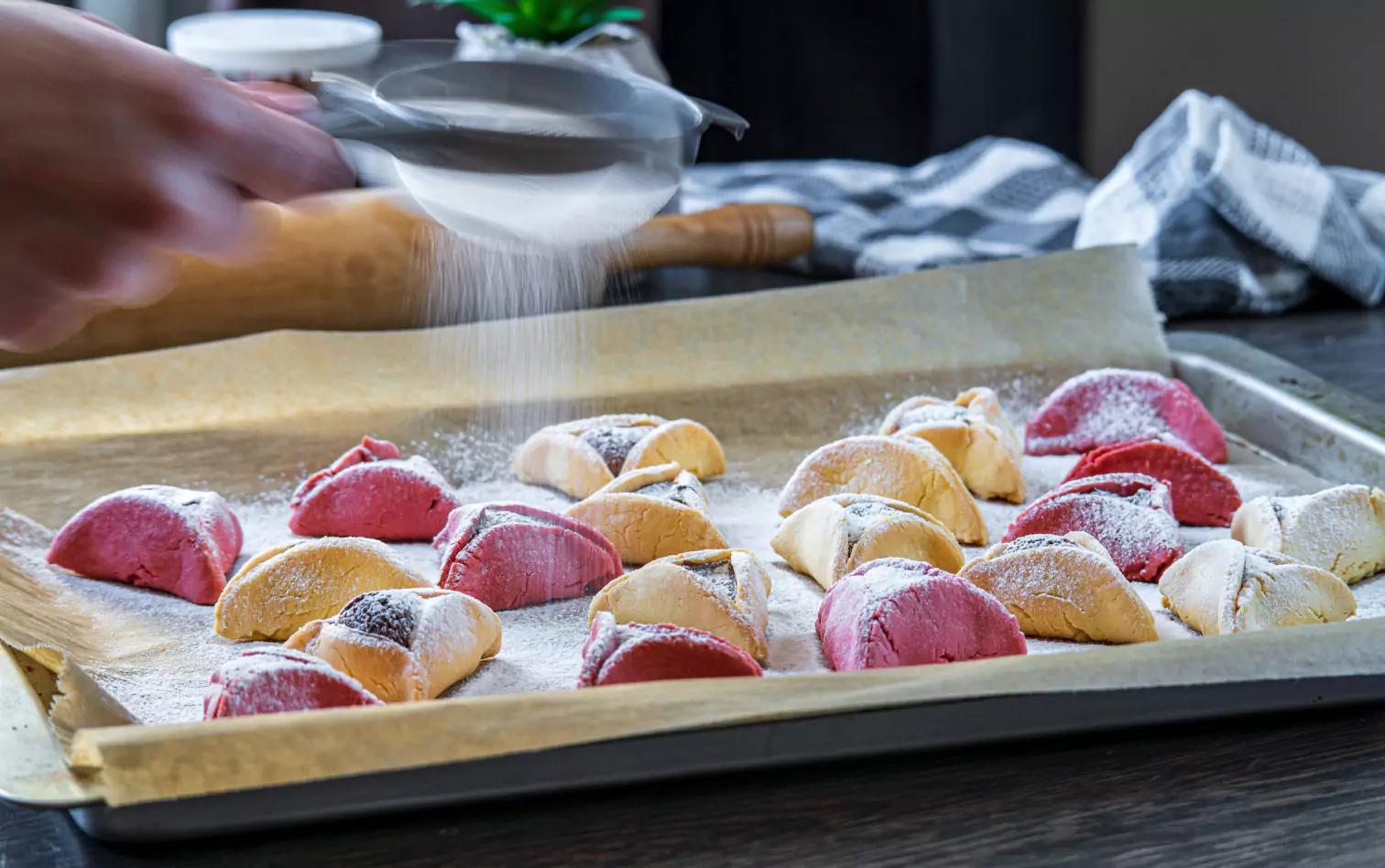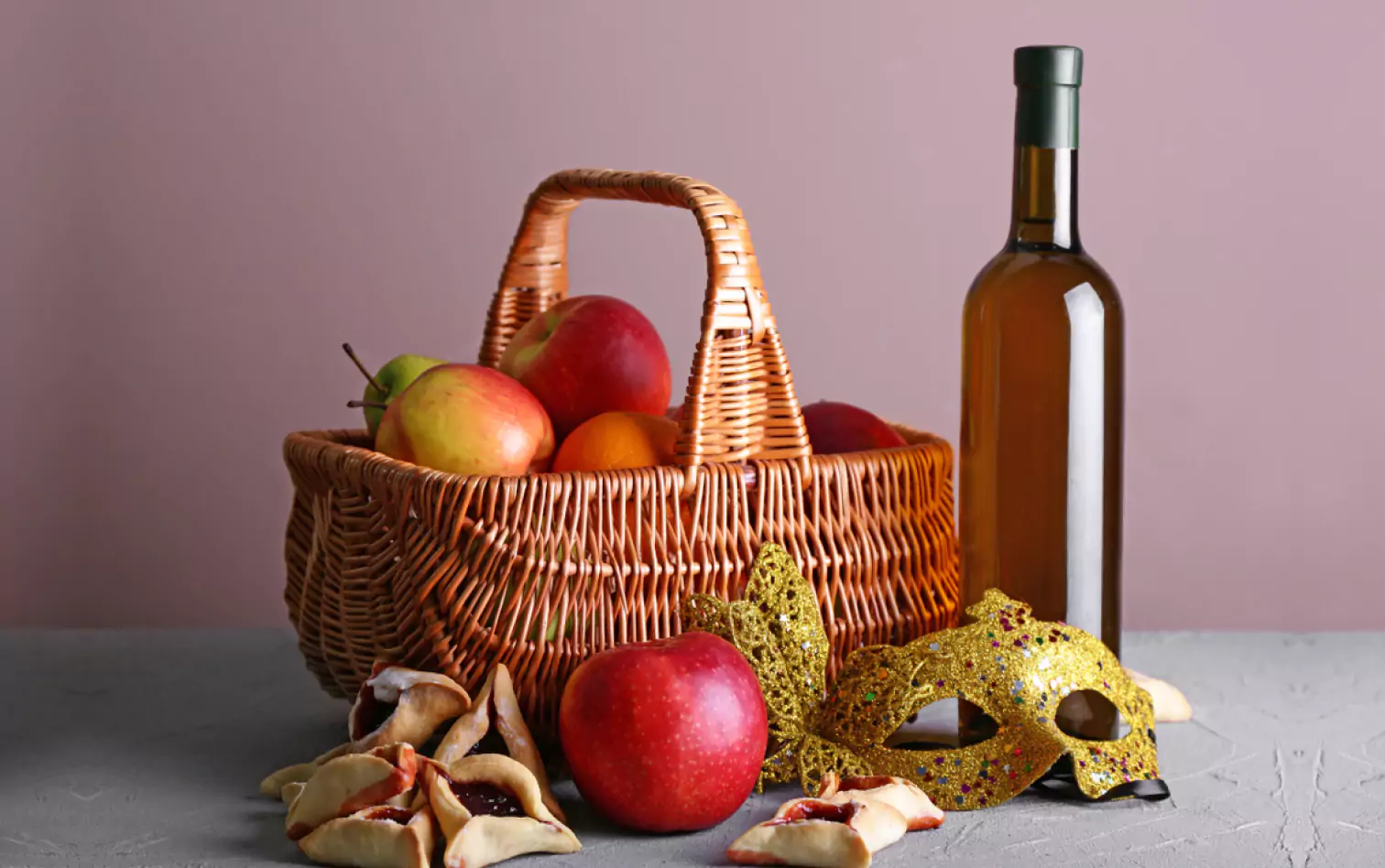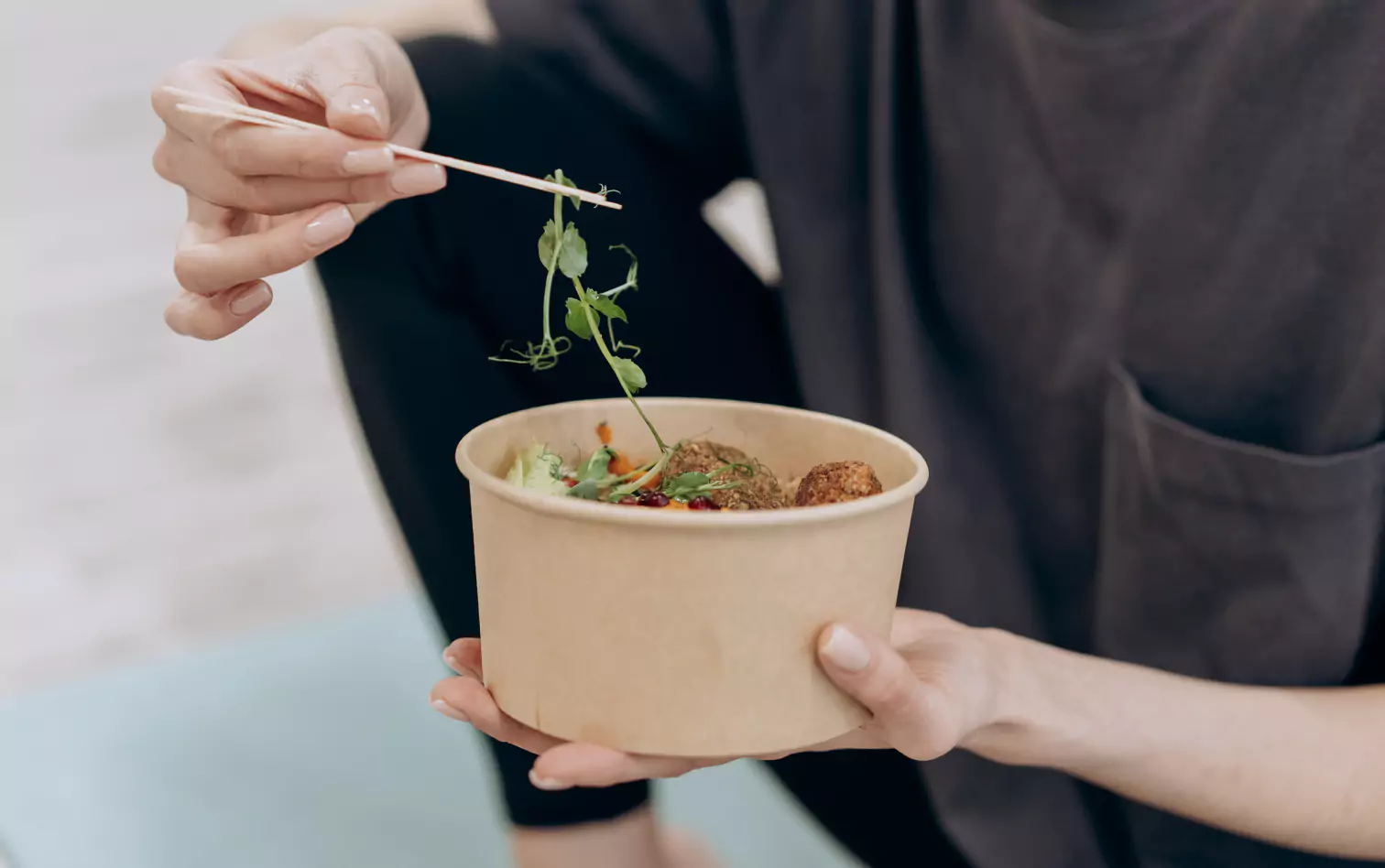Tips for a Healthy, Happy Purim

Key Takeways
Purim is a Jewish holiday that celebrates the account (believed to be from the biblical Book of Esther) of how the Jewish people were saved from a threatened massacre in Persia. It's celebrated annually on the 14th of the Hebrew month of Adar, which is usually in March or April on the Gregorian calendar.
This year, Purim begins on Wednesday night, March 16, and continues through Thursday, March 17. The day starts with a festive breakfast and continues with public readings of the Scroll of Esther. Children receive gifts, and everyone enjoys parades, and a celebratory Purim meal, known as se'udat Purim. Read on to learn more about the holiday and the delicious foods that accompany it.
The History of Purim

As we mentioned, Purim is a joyous day that’s focused on the story of how the Jewish people avoided a massacre in ancient Persia. The story itself is fascinating. According to the account in the Book of Esther, in the 4th century BCE, Haman (an advisor to the Persian king) plotted to kill the Jewish people in the empire. Thanks to Queen Esther and her husband King Xerxes (sometimes referred to as King Ahasuerus), Haman's plot was foiled, and Purim was born.
Jewish people celebrate Purim every year by eating hamantaschen (or hamantashen, our favorite three-sided, jam-filled cookies, also sometimes eaten on Hanukkah). Celebrations also include dressing up in costumes and reading the Scroll of Esther. Today, Purim is a popular Jewish holiday celebrated worldwide.
How Is Purim Celebrated?

Purim is one of the most joyous and fun holidays on the Jewish calendar. But what happens during Purim? And how is it celebrated? Here are some of the most common customs observed while celebrating Purim:
Reading the Megillah (the book of Esther): The Megillah recalls the story of the Purim miracle that gives this Jewish holiday its purpose. Traditionally, the Megillah is read on the eve of Purim and again on the day of Purim.
Giving gifts of food: Giving the gift of food is as important as enjoying your Purim meal. Families (or individuals) celebrate the occasion by providing food to friends, family, and those in need.
Helping those less fortunate than you: In the same vein as giving out food, it’s traditional to help those less fortunate than you during Purim. It can include anything from volunteering your time to donating money.
Feasting with family and friends: Purim often ends with a feast shared with family. It includes traditional foods, sweet treats, and alcohol (usually wine).
Dressing in costume: Apart from all the goodies, there’s also light-hearted fun during Purim. Usually, only children dress up in costume during Purim, but adults will often join in on the fun.
Prayer: While celebrating Purim, it’s traditional to give thanks to God for your good fortune and your loved ones.
Traditional Purim Foods We Love

Traditionally, Purim celebrations include a feast called a mishloach manot, which means "sending of portions." During Purim, traditional foods are served to commemorate the story of Esther. Each of these foods has a special meaning and symbolism associated with them. These foods are a crucial part of the Purim celebration for Jewish people.

Some of the most symbolic (and delicious) foods include:
Hamantaschen: Hamantaschen is a triangular pastry filled with fruit or poppyseed. The name (which some spell as hamantashen) translates to ‘Haman's pockets.’ Modern versions of this sweet treat include fillings like apricot and cranberry jam, crushed cashews, and chocolate.
Haroset: Haroset is a mixture of fruits, nuts, and wine and represents the mortar used by the Israelites to build bricks for their pyramids.
Mishloach Manot: Mishloach Manot are gift baskets containing food representing the gifts given to Esther by Mordecai.

Other common foods that are part of a 1 meals include:
Challah Bread: Also often served at Hanukkah and Rosh Hashanah, Challah bread is sweet, soft, and fluffy.
Sangria: This popular brunch drink is also a Purim favorite. The red wine cocktail is infused with fruits like apples and oranges and sometimes includes apple cider and honey.
Hummus and Pita Chips: Hummus is made by pureeing chickpeas, and we all know what pita chips are! It should definitely be on your list if you’re looking for healthy Purim recipes for your celebratory meal.
Pickled Vegetables: You will find sweet or spicy (and sometimes both!) pickled vegetables depending on whose table you are sitting at for your Purim feast.
Stuffed Mushrooms: The mushrooms usually have herbs and garlic for a Purim meal.
Sumac Spiced Chickpeas: Queen Esther is said to have lived off of legumes like chickpeas, seeds, and nuts to avoid eating non Kosher food, which makes this a symbolic Purim food.
Beef Brisket: Brisket is a commonly found meat on the table during Purim and may be used to make Kreplach.
Meat Kreplach: Speaking of Kreplach, these are the Jewish versions of dumplings. A Kreplach is usually filled with meats, most often beef brisket.
How to Stay Healthy While Celebrating Purim

As you enjoy the festivities, it's essential to be mindful of your blood sugar levels. Like most holiday foods, many foods in a traditional Purim meal can be carbohydrate-loaded and filled with added sugars.
But remember, everyone’s diet changes a little during the holidays, and that’s perfectly okay! There are ways to focus your meals around foods that will help you balance out the holiday “unbalance.”
If you have diabetes or any other condition that affects your blood glucose levels, check them throughout the day to avoid any spikes or crashes. Using a tool like a CGM (continuous glucose monitor) can be extremely helpful here. CGMs take consistent readings of your blood glucose levels so you can track your trends throughout the day. Here are a few other things to remember when it comes to blood sugar and food:
- Always try to eat balanced meals with whole foods. This means avoiding processed foods as much as possible.
- Stay hydrated throughout the day. It will help you feel fuller for longer and curb sugar cravings.
- Make sure to watch your portions. It's easy to overeat during the holidays, but be mindful of how much you're putting on your plate.
- Get plenty of sleep. If you are tired, your body will want to get a quick fix of energy from carbs and sugars, and you may end up reaching for more glucose-affecting foods than you realize if you are sleepy.
- Get some movement in during the day. After eating, go for a short walk with a loved one. Catch up and connect while helping prevent those pesky glucose spikes after your meal.
The Healthiest Options for Your Purim Feast

If you’re making a list of healthy Purim recipes and you’re having trouble deciding, we’re here to help! Some Purim dishes are already healthy enough to add to the menu without any modifications, but that doesn’t mean you have to avoid the slightly more indulgent ones.
You can also enjoy lighter, healthier versions of your favorite dishes with a few simple modifications! You can also try focusing your mishloach manot around more significant portions of the foods below. This way, you can eat smaller portions of the other, more indulgent ones.
Brisket: Brisket is a healthy, lean protein (make sure to trim off any fat) and a good option without too many modifications.
Hummus and Chickpeas: Legumes like chickpeas are a great source of protein, vitamins, and fiber.
Stuffed Mushrooms: Mushrooms are a great source of vitamins and nutrients, and when you pack them with herbs and garlic, they become even healthier.
Try these tips from the Nutrisense Nutrition Team to help boost the “health factor” of your Purim table:
- Try eating your hummus with raw vegetables like peppers, carrots, and zucchini instead of pita chips.
- Try substituting nut butter or fresh fruits in your Hamantaschen.
- Try infusing your red wine for 2-3 days with the fruit instead of adding honey or other sugary sweeteners.
- Try to prioritize eating some protein and fibrous foods before consuming the carbs on the table.
- Make some of your desserts gluten-free, with minimal added sugars. If you can tolerate them, consider sugar substitutes like monk-fruit sweeteners.
Find the right Nutrisense programto turn insight into progress.
Go Beyond Glucose Data with Nutrisense
Your glucose can significantly impact how your body feels and functions. That’s why stable levels are an important factor in supporting overall wellbeing. But viewing glucose isn't enough. Nutrisense, you’ll be able to learn how to use your body's data to make informed lifestyle choices that support healthy living.
One-to-one coaching
Sign up to access insurance-covered video calls to work with a glucose expert: a personal registered dietitian or certified nutritionist who will help tailor your lifestyle and diet to your goals.
Monitor and measure what matters
With the Nutrisense CGM Program, you can monitor your glucose with health tech like glucose biosensors and continuous glucose monitor (CGM)s, and analyze the trends over time with the Nutrisense App. This will help you make the most informed choices about the foods you consume and their impact on your health.
Find your best fit
Ready to take the first step? Start with our quiz to find the right Nutrisense program to help you take control.

Cheri is a registered dietitian and Health Co-Ordinator Product Development at Nutrisense, with a Master's degree from the University of Utah in Integrative Physiology and Nutrition. She has a strong interest in functional and integrative nutrition and emphasizes the importance of exploring and using your own body (symptoms, energy, mood, labs, CGM data) to find what your personal optimal is.




.jpeg)